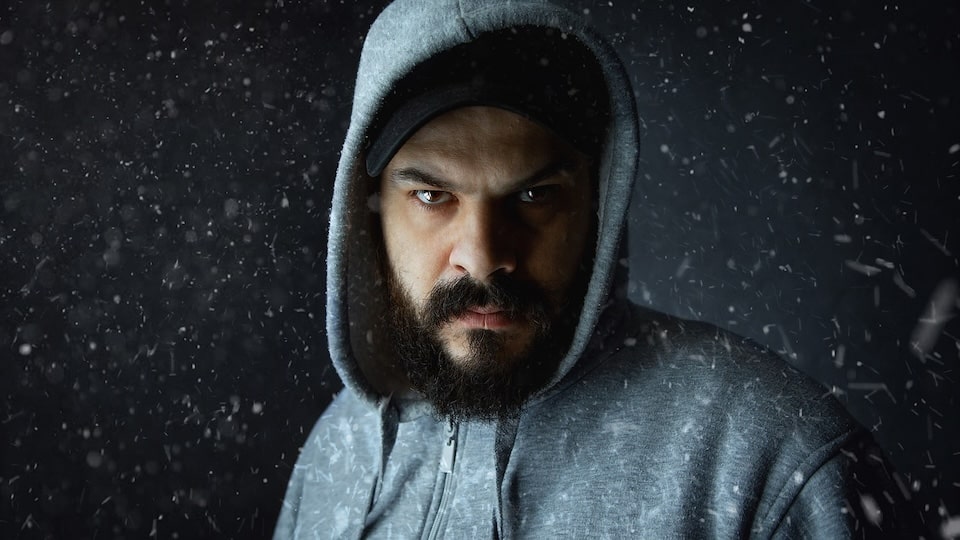I was a very impressionable child who loved storytelling. I was never a big reader so if someone had a tale to tell, I was in. A good storyteller makes listeners feel like they are part of the story. They set the stage, engage the listener, get emotional telling it, throw in some laughter and paint a picture in your mind. When I think back on it, you never really know what story is going to “stick” in your brain as we grow up. When I sat down to write this article about how to recognize and interpret pre-violence signals, the first thing that jumped in my mind was my dad.
My dad would tell the best stories. It seems that he was a bit of a “scrapper” back in the day. You see, he grew up in the St. Louis area, graduated from high school weighing no more than 100 pounds, and he never backed down. As an adult, this proved to be an asset in business, but in his youth, it meant some hard lessons.
Growing up, he would share stories where sometimes he was the hero and other times he was the instigator of schoolyard fights as a boy, pool hall altercations as a teen and running from a large group, in the dark streets of southern Illinois as a young adult.

As he reminisced, he would say things like, “I didn’t see that one coming, his hands were quick,” or “I knew I had him,” or even, “I could tell he was bluffing by his body language,” or this one – “ I quickly realized that I was in trouble when he started looking around for witnesses.” When I look back on all those statements now, I realize the extent of Dad’s ability to recognize and interpret pre-violence indicators was vast.
This subject has such depth that there are thousands of books, articles, blogs, etc., that have been written about pre-assault cues. Let’s look at 5 pre-violence signals that dad probably used to measure if a fight was imminent.

Visual Cues: When a bad guy stares at YOU, he could be sizing YOU up as the possible target. Another action is that he glances or stares at your chin, nose, throat and even your eyes as his potential target. He also may be glancing around looking for witnesses, police officers or security guards that could interfere with his plans, or he could be looking for the closest exit for his quick escape. Think about it this way, whatever the eyes are focusing on, means they are THINKING about doing something in that area.

Movements: The attacker frees his hands of bags, he has exaggerated movements, his hands are fisted or hidden, or he may be swaying and even fidgeting. These movements are usually not subtle and he could be freeing his hands so that he can attack, he could be clenching and unclenching his fists to get himself into the right mindset to strike, his hidden hands could be hiding a weapon and his body movements could be a planned distraction.
Hesitation to Respond/Silence: If you are in a heated argument and all of the sudden the other person goes silent, seems distracted or hesitates in answers, this usually means the fight is imminent. We are not multitaskers and can’t divide our attention very well when NOT under stress. Now imagine a stress-filled situation with our brains split between concentrating on attacking or responding verbally. The bad guy will most likely be fixated on his attack.
Grooming: Watch for the bad guy rubbing the back of his neck and/or arms, running his fingers through his hair, adjusting his clothing, licking his lips, “puffing” up and touching his face. These are all subconscious movements that can be directly related to “fight or flight.” The need to “rub” can be caused by anxiety where the adrenal glands stimulate a prickling sensation, the constant licking of his lips could be caused by restlessness and he may even “puff up” to look “bigger” and more intimidating.

Reactionary Zones/Distance: The attacker will need to get close to you to complete his attack cycle. People can have a hard time managing distances and the attack range can be closed very quickly. We need to understand how fast violence happens, our limited choices based on time and distance and making the BEST FIRST decision possible. Consider training and then practicing non-lethal, less than lethal and lethal decisions based on the proximity of the attacker and our reaction time.
These 5 pre-violence signals are not guarantees of violence, but when you mix them together and throw in some context, you need to pay attention. They are indicators that violence is possible and even probable when several cues are present. Please keep in mind that many other “telegraphed” indicators of violence exist.

I believe that over time, Dad’s life experiences taught him to consciously, and subconsciously, trust his instincts and respect his ability to instantly interpret the nonverbal signs of danger.
Remember, from the point that a bad guy chooses you, you will have a very limited amount of time to make a decision. They choose how and when. Your actions need to be confident, quick and decisive.
Shelley Hill wears a "bunch of hats." Her husband, Brian, named her the “Indispensable Organization Wizard” about 25 years ago and that has become her official title. Shelley is co-owner, XO and instructor at The Complete Combatant. She is an HK Brand Ambassador, publishes regular articles in Women’s Outdoor News and Shooting Illustrated, teaches online classes, is an Active Self Protection Certified Instructor, an Instructor Graduate of Modern Samurai Project's Red Dot Instructor program, NRA Certified Instructor, Certified NRA Chief Range Safety Officer, Refuse to be a Victim Instructor and is a Certified OC (Pepper Spray) Instructor through Chuck Haggard's Agile Training & Consulting. She is the designer and mastermind behind Image Based Decisional Drills, Smart Choices , LockedIn Grip, The Complete Combatant's annual The Mingle for professional ladies in the "firearms/self defense" industry and The Quest for red dot shooters. She is also the President of a non-profit organization called Blue Line Ponies. This 501c3 focuses on providing a retirement range for our career service horses. Shelley is also a presenter at several national conferences is a public speaker and she actually loves people. View all posts by Shelley Hill
There may be a lot of articles on the subject, but Shelley zeroes in on the essential indicators in an engaging style that pulls the reader in, and makes them want to read every word. I’m looking forward to her next article!